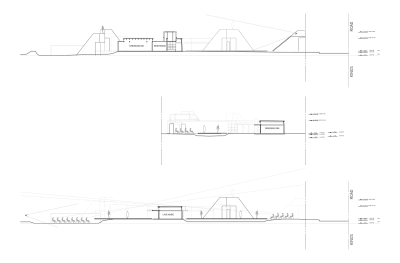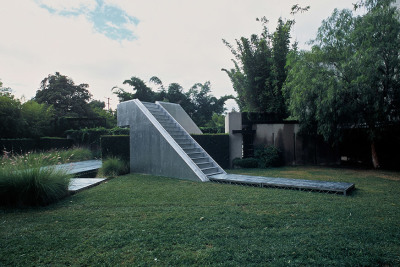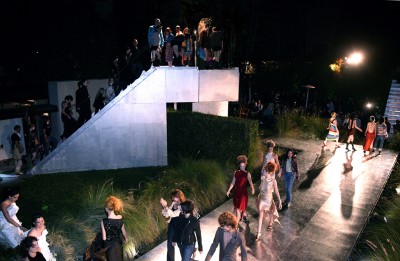Many texts have been written on the Schindler House, which is not an object but a series of elements and material explorations that are calibrated with a desire to establish a connection between inside and outside. The pinwheel plan renders a center and wings, an arrangement as differentiated as the human body, whose limbs are only loosely connected to the center with utmost freedom for self-expression that is produced from their own insides. A sense of protection comes through the mass of the sliced, tilt-up concrete walls. Pureness of rhythm is established by adopting an order of structure for the wooden studs. Height is determined by the length of the wood. Nothing too much and nothing too little, a balanced relationship of all shades of hard and soft, warm and cool, dark and light, open and closed, inside and outside. Spaces that breathe, horizontal in expansion, vertical through light. Outside, differentiation occurs through planting: exterior rooms, sunken gardens that are not for stepping into, filled with high grasses. Bamboo acts as the overall exterior skin.
How do you interact with an architecture as delicate and balanced as the Schindler House, an order that is so precisely put, where nothing is too little and nothing is too much?


Our task was to build the stage set for a fashion show that happened not in the house, but outside of the house. We decided to place a series of objects of a different geometric order than the Schindler House. The objects were taller than the roofline, some in the front and some in the back. Modeled on ancient Ziggurat structures, the objects climbed hedges and bridged walls, setting up diagonal lines in space through the otherwise orthogonal plan. Like thinking by association across known categories, new dots were connected visually in the organization of the house, and thus a new reading was allowed.
The models walked on a three-dimensional path, winding up and down the stairs and through the house, popping up from between the wings of the house in random order. The fashion could be seen from all angles and distances: front and back, above and below.

Life’s lessons are always understood after some time. The magnitude of the privilege of working in an environment such as the Schindler House only registered on me much later. With numerous visits to the house over the course of decades, it becomes clear: while so delicately balanced as a structure and so radical an example of domestic architecture as an object of experimentation, the Schindler House is able to absorb and allow a multitude of other activities and events. It is like its inhabitant’s larger body, whoever they may be at the time. It grows with the sun and sleeps in the stillness of the night; and it dreams. Like life itself this body can be transformed in many ways, yet is complete in itself with nothing too much and nothing too little. An alcove in its own wilderness, it allows every wanderer to return home.